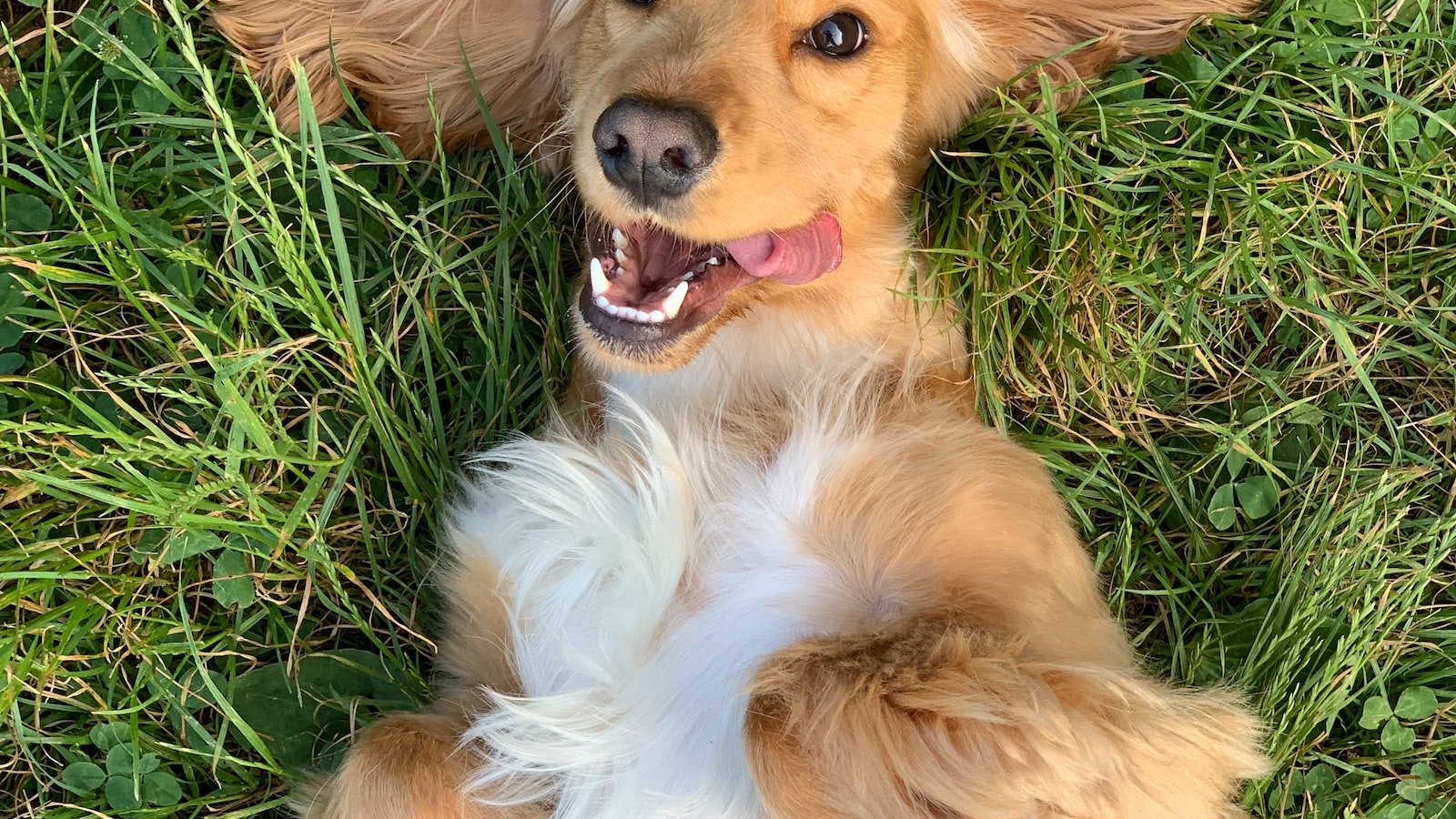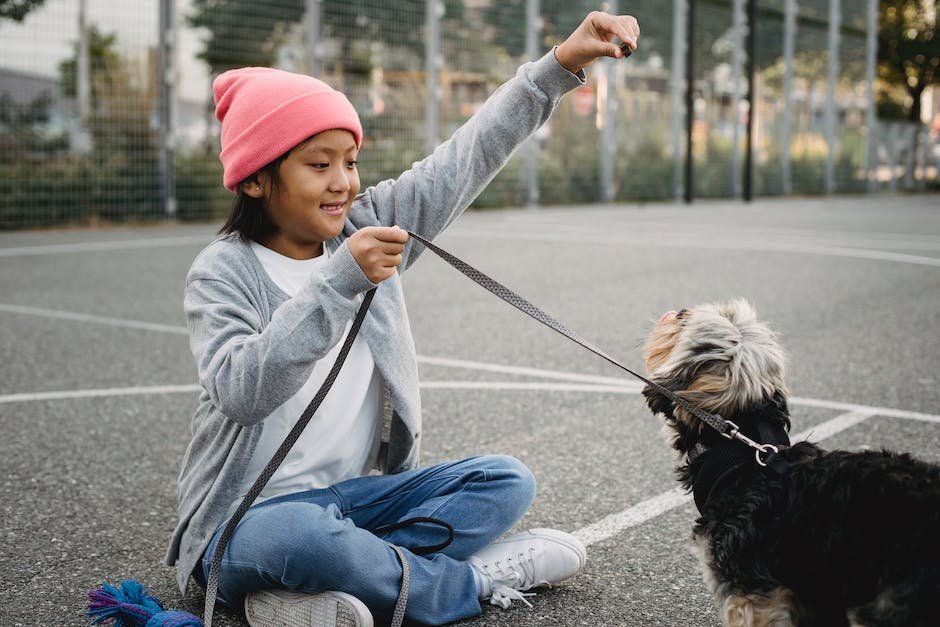Doors have always held an air of mystery and intrigue for our inquisitive canine friends. Imagine the astonishment on your guests’ faces when they witness your four-legged companion flawlessly opening doors with a playful wag of the tail. Teaching your dog to perform this mighty feat is not only a source of entertainment, but it also cultivates their intelligence and problem-solving skills. In this guide, we will unravel the secrets behind training your furry companion to become a master of the doorknob, unlocking a world of endless possibilities. So, grab your dog’s favorite treats and let’s embark on a journey filled with ingenuity and pawsome accomplishments!
Table of Contents
- Teaching Your Dog the Basics of Door Opening
- Choosing the Right Method to Train Your Dog
- Step-by-Step Guide: Teaching Your Dog to Open Doors
- Troubleshooting Common Challenges in Door Opening Training
- Expert Tips for Reinforcing and Perfecting the Trick
- Q&A
- In Summary

Teaching Your Dog the Basics of Door Opening
Dogs are incredibly intelligent creatures and can be trained to perform a wide range of tasks. One skill that can come in handy for both you and your furry friend is teaching them how to open doors. Not only is this an impressive trick, but it can also be useful in various situations. Here are some tips to help you teach your dog the basics of door opening:
1. Start with the basics:
Before diving into the door-opening training, make sure your dog has a good grasp of basic commands such as “sit,” “stay,” and “come.” This foundation will make the process much easier for both of you.
2. Introduce the concept:
Show your dog the door handle and let them become familiar with it. Use positive reinforcement like treats or praise when they show any curiosity or interest in the handle.
3. Target training:
Use a target stick or your hand to guide your dog’s paw towards the door handle. Reward them whenever they make any contact, even if it’s just a gentle touch.
4. Work on paw coordination:
Teach your dog to lift their paw higher and touch the handle with more purpose. Gradually increase the difficulty by placing the target stick higher and encouraging them to reach for it.
Remember, consistency, patience, and positive reinforcement are key when teaching your dog any new skill. Make the training sessions short and enjoyable, and always end on a positive note. With time and practice, your furry friend will amaze you by confidently opening doors like a pro!
Choosing the Right Method to Train Your Dog
When it comes to training your beloved four-legged friend, selecting the right method is crucial for their well-being and overall progress. With numerous training approaches to choose from, it’s important to consider your dog’s individual needs and temperament.
First and foremost, positive reinforcement is a highly effective method that focuses on rewarding desired behaviors rather than punishing unwanted ones. This technique involves using treats, praise, or toys to reinforce your dog’s good behavior and encourage them to repeat it. Not only does positive reinforcement create a bond of trust between you and your furry companion, but it also helps them develop self-confidence and eagerness to learn.
On the other hand, some dogs may benefit from more structured training methods such as clicker training or obedience classes. Clicker training uses a small device that emits a distinctive sound, followed by a reward, to reinforce positive behavior. Obedience classes, led by professional trainers, provide a structured environment where your dog can learn basic commands and socialize with other dogs, making it an excellent choice for more energetic or social animals.
- Consider your dog’s individual needs and temperament.
- Positive reinforcement focuses on rewarding desired behaviors.
- Clicker training or obedience classes can provide structure.
Remember, each dog is unique, so it may be necessary to experiment with different methods to find what works best for your furry friend. Keep in mind that patience, consistency, and clear communication are key when training your dog and building a strong and loving relationship.

Step-by-Step Guide: Teaching Your Dog to Open Doors
Teaching your furry friend to open doors can be a fun and practical trick that adds a touch of independence to their repertoire. Follow these steps to have your pup proudly showing off their new skill in no time!
1. Start with basic commands: Before diving into door-opening training, make sure your dog is well-versed in basic obedience commands such as “sit,” “stay,” and “come.” These commands will lay the foundation for more complex skills.
2. Choose the right door: Pick a lightweight door with a lever handle that is relatively easy for your dog to manipulate. Heavy doors or knobs may be too challenging initially and could lead to frustration.
3. Introduce the door association: Begin by teaching your pup that the door is directly linked to rewards. Hold a treat against the door handle and encourage your dog to paw at or nudge it. Once they touch the handle, praise and reward them with a treat.
4. Shape the behavior: Gradually shape your dog’s actions by rewarding them for increasingly targeted behaviors. Reinforce the pawing or nose-nudging motions and introduce the command “open” or a unique door-opening cue.
5. Practice, practice, practice: Consistency is key! Encourage your buddy to repeat the behavior until it becomes second nature. Repeatedly opening doors with your dog will reinforce their understanding and increase their confidence in performing this trick.
6. Generalize the skill: Once your dog has mastered opening one specific door, gradually introduce variations such as different doors within your home, doors with different handles, or even doors with push mechanisms.
Remember, teaching your dog to open doors should always be done in a safe and supervised environment. Enjoy the process of training and celebrate your pup’s success along the way!

Troubleshooting Common Challenges in Door Opening Training
When it comes to door opening training, there are certain challenges that can arise along the way. To ensure a successful training experience, it’s important to be prepared for these hurdles and have strategies in place to overcome them. Here are some common challenges you may encounter:
- Lack of Confidence: Some individuals may struggle with a lack of confidence when it comes to opening doors. This can happen due to a previous negative experience or simply a fear of failure. To address this, provide positive reinforcement and reassurance throughout the training process. Encourage them to practice in a safe and supportive environment until they gain the necessary confidence.
- Difficulty with Lock Mechanisms: Locks can be complex, with various mechanisms that can confuse trainees. If they are having trouble understanding a particular lock, break it down into smaller components and explain each part in detail. Utilize visual aids or demonstrations to help them visualize the workings of the lock, making it easier for them to grasp the technique.
- Physical Limitations: Certain individuals may face physical limitations that make door opening training more challenging. This can include conditions such as arthritis or limited mobility. It is essential to adapt the training to accommodate their specific needs. Provide alternative techniques or tools that can assist them in overcoming their physical limitations.
By addressing these common challenges head-on, you can enhance the effectiveness of door opening training and ensure that participants have the necessary skills to overcome any obstacles they may encounter in the real world.
Expert Tips for Reinforcing and Perfecting the Trick
Mastering a trick requires practice, patience, and a keen attention to detail. Here are some expert tips to help you reinforce and perfect your trick, whether you are a novice or a seasoned performer:
- Break it down: To make the trick easier to understand and perform, break it down into smaller parts. Focus on mastering each component individually before attempting to combine them together.
- Visualize success: Visualization is a powerful tool that can enhance your performance. Close your eyes and imagine yourself flawlessly executing the trick. This mental rehearsal can help improve muscle memory and build confidence.
- Study the pros: Watch videos or observe live performances of expert magicians who have successfully mastered the same trick. Pay attention to their technique, timing, and presentation. Analyze their movements and learn from their execution.
- Seek constructive feedback: Find a mentor or a fellow magician who can provide constructive criticism on your performance. Their input can help you identify weaknesses, refine your technique, and make necessary adjustments for a more polished presentation.
- Record and review: Set up a video camera or use your smartphone to record your practice sessions. Review the footage to pinpoint areas that need improvement. Pay attention to small nuances and make adjustments accordingly.
- Practice consistently: Practice is the key to mastery. Dedicate regular time slots to practice your trick, aiming for consistency and precision. Repetition will reinforce muscle memory and help you achieve a seamless execution.
- Stay patient and persistent: Remember that perfection takes time. Keep a positive mindset, embrace failures as learning opportunities, and remain persistent in your pursuit. With dedication and perseverance, you’ll eventually achieve mastery.
By following these expert tips, you’ll reinforce your trick and elevate your performance to new heights. Remember, magic is an art form that requires continuous improvement and an unwavering commitment to honing your skills. So embrace the process and enjoy the journey towards becoming a truly remarkable magician!
Q&A
How can I teach my dog to open doors?
To teach your dog to open doors, start by teaching them to nose or paw at an object, such as a bell or a light switch, using positive reinforcement. Gradually transition to teaching them to do the same action on a door handle. Practice consistently, rewarding your dog each time they successfully open the door until they master the trick.
What are some essential commands my dog should know before attempting this trick?
Before teaching your dog to open doors, they should be familiar with basic obedience commands such as “sit,” “stay,” and “leave it.” These commands serve as a foundation for a well-behaved dog and help in teaching more complex tricks like opening doors.
What kind of door handles are best for this trick?
Lever-style door handles are preferred for teaching dogs to open doors. These handles are easier for dogs to grasp with their paws and provide better leverage. Avoid round knobs as they are more difficult for dogs to manipulate.
How can I prevent my dog from opening doors indiscriminately?
To prevent your dog from opening doors unintentionally, consider using baby gates or installing childproof locks on certain doors. It’s important to train your dog to understand which doors they are allowed to open and reinforce this behavior consistently.
Are there any safety concerns to keep in mind for this trick?
Yes, safety should always be a priority when teaching your dog to open doors. Make sure that the doors your dog will be practicing on do not lead to potentially dangerous areas. Always supervise your dog when they attempt this trick to prevent accidents or injuries.
Is this trick suitable for all breeds and sizes of dogs?
While any breed or size of dog can potentially be taught to open doors, it may be easier for larger breeds or those with longer limbs. Smaller dogs may struggle with reaching door handles, but with proper training and adaptations, many dogs can successfully learn this trick.
In Summary
As we conclude this guide on teaching your furry friend the handy skill of opening doors, let us celebrate the extraordinary bond we share with our canine companions. Unlocking doors may seem like a mere parlor trick, but it speaks to the incredible intellect and capacity for learning that resides within our four-legged pals.
Remember, teaching your dog to open doors requires patience, consistency, and a sprinkle of magic. The journey will have its fair share of paw-falls and tail-wags, but with time and effort, you’ll witness the sheer joy and accomplishment shining through your dog’s inquisitive eyes.
So, open your doors to new possibilities, both figuratively and literally, as you embark on this wondrous adventure of canine education. Remember that each dog is unique, and adapting the techniques to suit their individuality will lead to the most paw-some outcomes.
Whether it’s fetching the morning paper or welcoming guests with an impressive door-opening display, this trick will undoubtedly leave both friends and spectators in awe. Don’t be surprised if your dog starts fancying himself a canine locksmith!
May your doors swing open to a world filled with wonder, as you continue to explore the infinitely rewarding realm of pet training. Together, you and your loyal companion have shattered another barrier, proving once again that in the realm of possibilities, there are no closed doors when it comes to the extraordinary bond we share with our four-legged adventurers.
As an affiliate, my content may feature links to products I personally use and recommend. By taking action, like subscribing or making a purchase, you’ll be supporting my work and fueling my taco cravings at the same time. Win-win, right?
Want to read more? Check out our Affiliate Disclosure page.